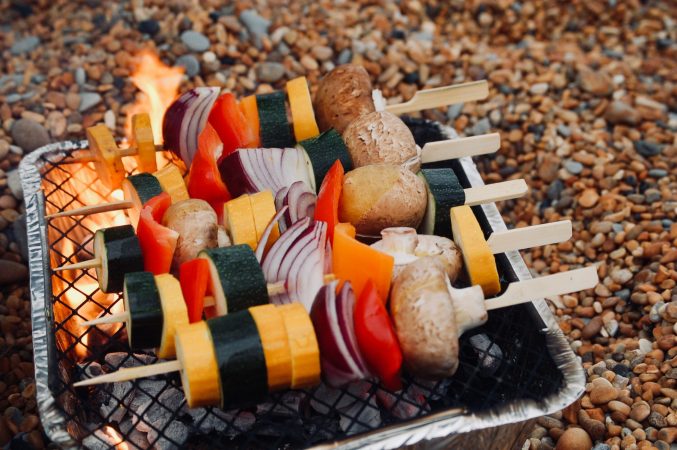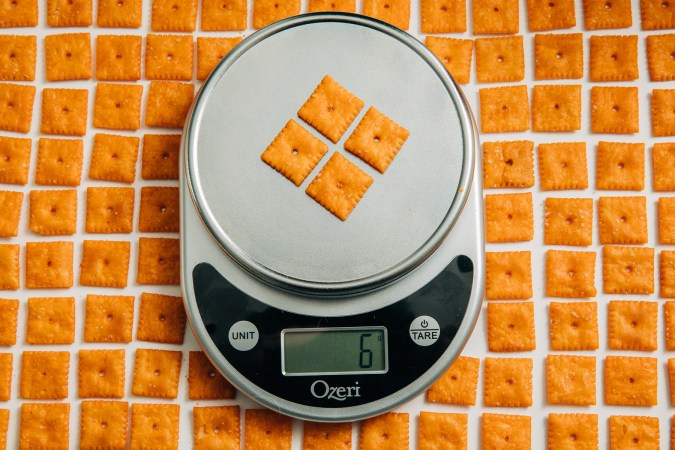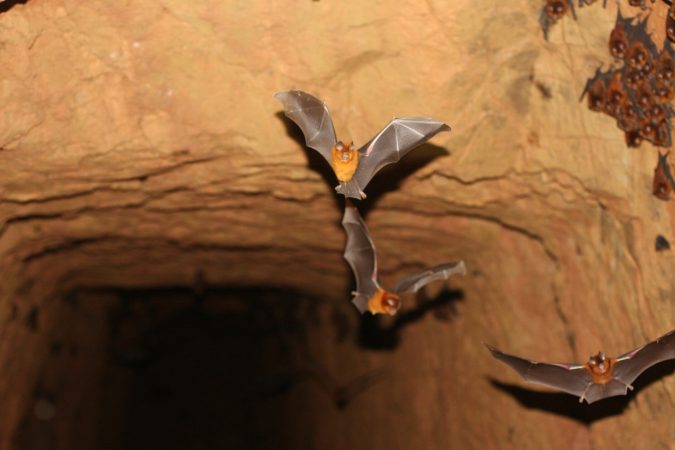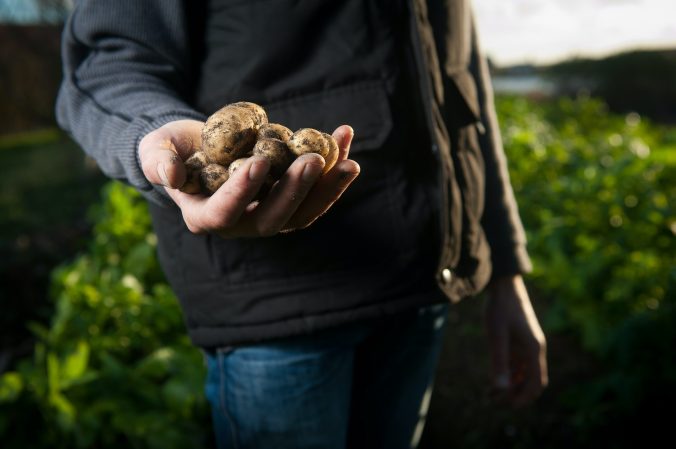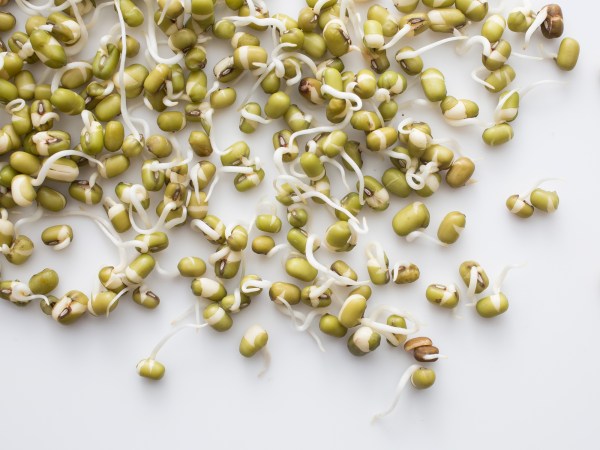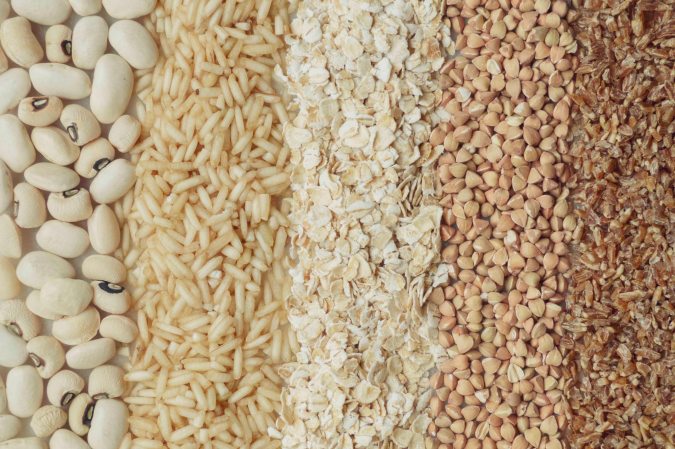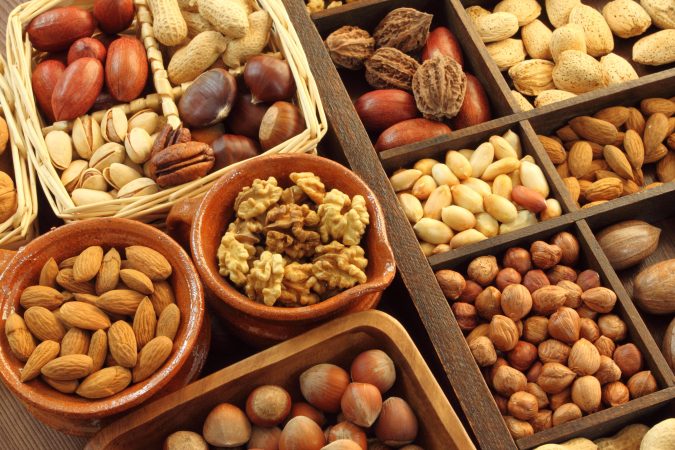
This story originally featured on Outdoor Life.
Looking for something to do while you’re stuck at home during the COVID-19 quarantine? Planning ahead for the day that the food pantry is bare? Gardening is a great activity in the springtime and anyone can grow food, even if you’re stuck in an apartment. You’ll just need a spot with ample sunlight, some dirt and water, something to start growing, and a generous amount of patience. Whether you’re gardening just as a pastime or doing it as a food security strategy, you might be surprised how rewarding it can be.
The modern “victory garden”
During World War I and II, Americans at home responded to the call to plant “Victory Gardens” in their backyards and in public spaces across the nation. The main goal of the movement was to increase the public food supply and allow more commercially produced crops to be funneled toward the war effort. This activity was also a powerful morale booster for the citizenry, allowing people of all ages and abilities to feel empowered by their self-reliance and feel proud of their contribution to the war effort. In 1943, there were at least 20 million “war gardens” growing, which yielded a staggering eight million tons of food in the United States. This was nearly half of the food consumed that year in the country. Jump forward to 2020. With self-quarantine recommended across the nation, you can do your part to limit your interaction with others and avoid some unnecessary trips to the grocery store. Plant a “Victory Garden” and stay the hell home. The sooner we all get serious, the sooner we can stamp out the COVID-19 pandemic.
Be patient and manage your expectations
If you’ve never tried gardening before, it’s a great exercise in patience and expectation management. You don’t plant seeds so you can eat today; you plant seeds so you can eat next month (or next year). A survival garden, just like any other garden, will require you to be patient. Nothing good grows overnight. It will be a month or two before the simplest and most low calorie vegetables (lettuce and radishes) are ready to harvest (if you took good care of the plants, and no diseases or pests struck your crop). Patience is a virtue that is valuable in many situations, gardening especially. In addition to being patient, it’s also important to manage your expectations. Not every seed will sprout and not every plant will make it to harvest. I remember more than a few “old timers” telling me to plant three times as much as we needed. That would give us one for the deer (even when we are trying to keep them away), one for the bugs (even with pest control) and one for the dinner table. Gardening is a lot like dodgeball. There’s a lot of running around, but if you aim low, stay reactive to threats and don’t expect too much, you might just win.
Pick a site with light
There are many necessary things for a successful survival garden, but the location is absolutely critical. You’ll need enough room for the plants you have planned and you’ll need enough sunlight. Whether you are planting in the ground or in a pot on a balcony, you should have a spot with eight to 12 hours of completely uninterrupted sunlight each day. The shadow of just one tree or structure, sweeping across your garden for an hour, can prevent certain seeds from sprouting and cause other plants to struggle. Plants need light to grow, and many are very sensitive to interruptions in light. Watch your prospective garden spot at different times of day (you’ve got time during quarantine) to make sure it has light exposure the whole time. For those without a field, yard, or even a balcony to grow food, consider growing indoors with grow lights (though this uses a lot of electricity) or ask your building manager if you could set up a small container garden on the building roof. Bribe them with the offer of fresh veggies and you might be able to strike a deal. And if you can’t do that, I’ll show you how to grow sprouts at the end, with no light required. I told you, anyone can grow food.
Mind the season
Hold off on those tropical vegetables. It is early spring and you’ll still need to focus on frost-tolerant plants. Even though plenty of garden centers are already stocking live tomato plants and other “hot-blooded” vegetables, you’re asking for disappointment by planting these too early. Unless you’re growing indoors, you’ll first want to figure out your date of “last frost” in your area. Latitude and elevation play a big role in nighttime temperatures, frosts, and freezes. Plants that are native to warm places (like tomatoes, peppers, and eggplants) are not cold tolerant. Even a light frost will kill them. You can start your “tropical” seedlings now in a warm indoor space (they take a long time to sprout anyway). For now, plant crops that are native to colder parts of the world. Here are just a few.
Seeds you can sow directly in early spring
- Greens: lettuce, kale, collards, Swiss chard, spinach, and arugula
- Root crops: radishes, carrots, turnips, and beets
- Peas: early peas and snow peas
Live plants you can put out in early spring
- Onion sets
- Hardy herbs: rosemary and thyme
- Cruciferous vegetable seedlings: cabbage, cauliflower, broccoli, and kohlrabi
Create a survival-garden layout
Once you’ve figured out “where” you will be growing plants and “what” can be grown in the springtime, it’s time to create a plan. The most natural place to begin is to discover what resources you have at your disposal. Your options may be limited by social distancing, but if you can still get out to the store or order products for delivery, you’ll have lots of options. There’s no use dreaming about the plants you can’t get now or the ones that will die in the cold. Just focus on the plants you can acquire (as seeds or seedlings) and pay some attention to calories. The caloric value of your crops should be the main focus in a survival garden. In your planning, you’ll also want to do some simple math.
Figure out how much room you have to grow and the spacing that the plants require. This will allow you to calculate how many plants or seed packs to buy. Don’t cram too many plants together: They each need a certain amount of space, otherwise they will underperform due to competition for moisture, light, and nutrients. Mel Bartholomew’s book Square Foot Gardening is a great resource, though you may want to leave a little more space between plants than the book recommends, for bigger and better results.
Get creative with containers
If you’re blessed with a sunny patch of rich dirt and you can grow vegetables in the ground, count yourself lucky. If that’s not you, don’t despair. You’re still in the race. Most plants perform best when growing in loose deep soil. We can, however, still do a good bit of growing in containers. Don’t feel like they have to be special containers. Almost anything will work. It just needs to be able to hold enough dirt to grow a fairly normal root system for that type of plant or number of plants.
I’ve grown plants in all kinds of vessels. Trash cans, bins, and buckets are all great candidates for containers. Just drill or punch some holes in the bottom (if they aren’t already there). This will allow excess water to drain and create a healthier condition for the plant roots. Without adequate drainage, you’ll run a greater risk of fungal diseases killing your plants. Fill your waiting containers with any dirt-like growing medium you can get. You can use potting soil, mulch, compost, aged manure, or some dirt you dug up locally. This can be supplemented with fertilizer and should be watered with clean water. Rain is ideal (where legal to catch), though municipal tap water can be de-chlorinated by letting a bucket of “city” water sit open for a few days.
Add high-calorie crops
Yes, salads are good for you and most lettuce varieties excel in cooler weather, but salads will starve you to death without creamy dressing and bacon bits (neither of which can be grown in a garden). Since calories are the whole point of a survival garden, add some nutrient-dense crops as soon as the weather permits. You can even use things you already have like old potatoes. When white or sweet potatoes begin to sprout, chop them up so that each sprout has a good chunk of potato attached and plant them. It’s just that easy. The calories listed below are per 8-ounce cup.
- Peanuts (1200 calories, 4 to 5 months to harvest)
- Sunflower seeds (800 calories, 4 months to harvest)
- Soybeans (775 calories, 3 to 5 months to harvest)
- Chickpeas, kidney, lima & fava beans (600 calories, 3 to 4 months to harvest)
- Sweet potatoes (180 calories, 3 to 4 months to harvest)
- Potatoes (140 calories, 3 to 4 months to harvest)
- Carrots (80 calories, 2 to 3 months to harvest)
- Tomatoes (50 calories, 3 to 4 months to harvest)
- Turnips (35 calories, 2 to 3 months to harvest)
Pepper in perennial herbs
Despite the cold of winter, some tough herbs can stay alive through the coldest times. These hardy woody-stemmed plants and bulbs can be grown near your kitchen door in most climates to give your food some fresh flavors during the coldest weather. When you’re tired of eating the same vegetables over and over, use your fresh herbs to transform the meal into something new. Perennial plants also represent a great financial investment, as your plants will live for years, instead of just one growing season. Prepare your soil for a few long-term residents, and plant a few of these.
- Rosemary
- Sage
- Oregano
- Thyme
- Tarragon
Save seeds for the next garden
The ultimate way to be frugal with your seeds is to save them from this year’s plants to replant next year. This is best done when you are growing single varieties of each vegetable, to avoid unpredictable results from cross pollination. Let the veggies mature completely, remove the seeds, and dry them for storage. An easy rule of thumb in seed storage is to add the storage temperature number (in Fahrenheit) to the humidity percentage number. For example, 60 degrees F and 30 percent humidity gives you 90 points. The total of these two numbers should always be below 100 points. Lean toward the dryer side in storage, and your seeds will sleep happily for years.
Grow sprouts
Anyone can grow food, even if you live in a windowless basement apartment in the big city. You could buy a mushroom kit to grow fungus as a food crop. You can also grow sprouts in a jar. Simply add a small amount (2 to 3 tablespoons) of sprouting seed mix to a jar and add cool clean water. Cover the jar with a mesh lid or a piece of cloth (held on by a rubber band). Allow the seeds to soak for eight hours, drain them, and rinse them with fresh water. Rinse and drain them three times a day for the next two days, and eat them when they have sprouted and grown baby leaves. For best results, give your sprouts a few hours of sunlight before eating them, just to add some color and additional vitamins. Enjoy them in a salad, on a burger, or as a snack.
Eat some weeds
It’s a shame not to take advantage of wild edible plants that pop up in the garden. Think of these unexpected herbs as beneficial plants, rather than a nuisance. Many common garden weeds are also wild edible plants. Make sure you have positive identification of the plant, and then treat those weeds as valuable vegetables. Frequent edible garden weeds include dandelion, chickweed, plantain, clover, chicory, lamb’s quarters, sorrel, and violets.
